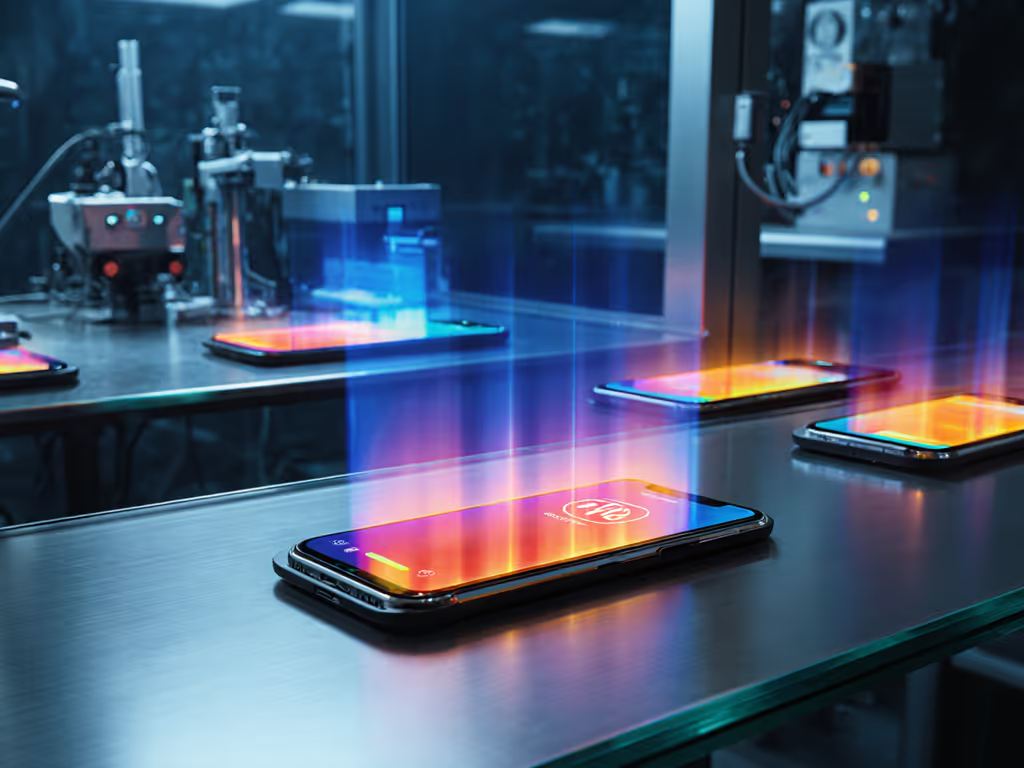
Far-Field Wireless Chargers: Beyond Qi Range Limits
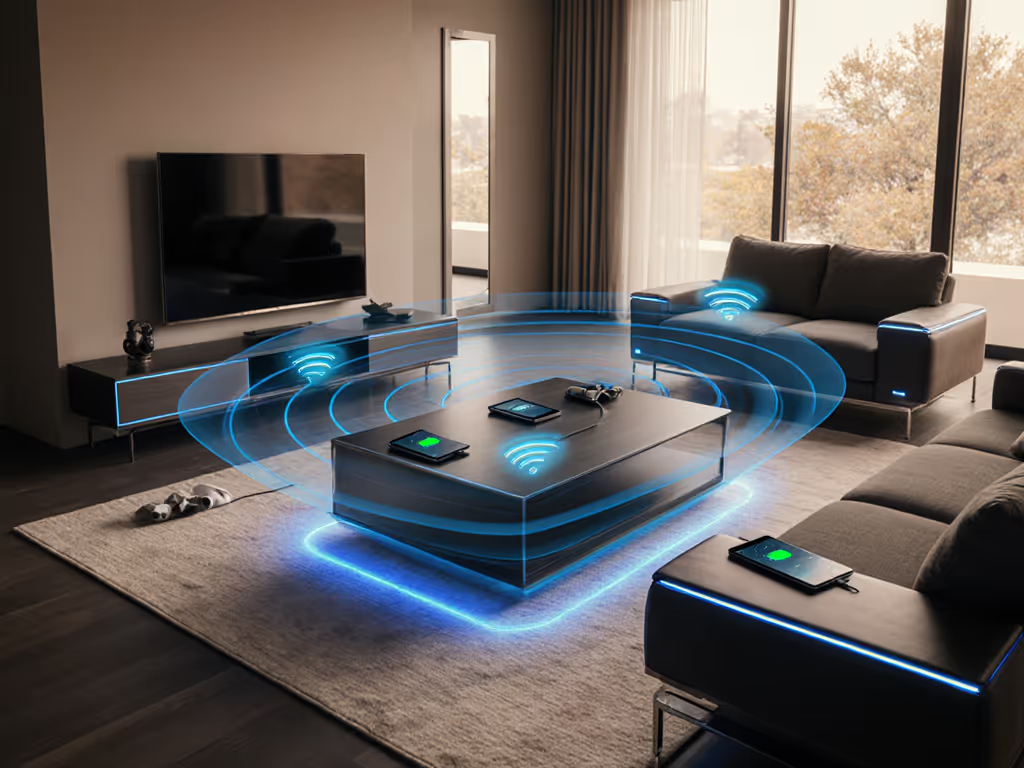
As someone who's spent years designing room-by-room charging flows, I've seen the frustration of wireless charger limitations up close. When your phone needs power but you're stuck within inches of a Qi pad, daily life grinds to a halt. That's where far field wireless charging changes everything, moving beyond the frustrating constraints of current standards. No more hunting for that perfect alignment spot on your nightstand or juggling multiple devices on crowded pads. After years of hospitality work, I've learned that true power freedom isn't about watts; it's about creating spaces where devices charge without demanding your attention.
Calm spaces emerge when power has predictable, obvious homes. And today, we're stepping beyond the frustrating range limitations holding back your charging ecosystem.
The Reality Check: Why Qi Pads Aren't Enough
Let's acknowledge what Qi wireless charging does well: reliable, efficient charging when your device is perfectly positioned. But how often does that happen in real life? When you're working at your desk, cooking in the kitchen, or navigating your living space with AirPods in your ears, Qi's 4cm range becomes a constant constraint.
From my time designing guest rooms, I've seen countless visitors fumble with chargers, anxious they'll 'break' something. They'd pick up their phone from the Qi pad only to find it hadn't charged at all due to slight misalignment. The anxiety wasn't about the technology failing, it was about the invisible rules of engagement.
Far-field wireless charging operates differently than what you're used to. While Qi uses near-field magnetic induction (requiring tight coil alignment), far-field systems leverage electromagnetic radiation (think microwaves, infrared, or radio frequencies) to transmit power across greater distances. For a deeper explainer on resonant and RF wireless charging and where it fits between Qi pads and true far-field systems, see our guide. This shifts the paradigm from "place your device precisely" to "power flows naturally through your space."
| Feature | Qi Wireless Charging | Far-Field Wireless Charging |
|---|---|---|
| Range | Up to 4cm | Room-scale (multiple meters) |
| Efficiency | High (70-85%) | Moderate (currently 10-40%) |
| Power Transfer | Magnetic induction | Electromagnetic radiation |
| Device Positioning | Precise alignment required | Flexible within coverage zone |
| Best Use Case | Nightstands, desks | Whole-room charging, moving devices |
Step 1: Map Your Room-Scale Power Needs
Before investing in any system, understand your actual requirements. Far-field solutions aren't one-size-fits-all, and clarity starts with knowing your power budget per room.
Label beats lecture. When guests understand your charging ecosystem at a glance, they stop second-guessing every move.
Create a simple charging inventory:
- List devices needing power (phone, watch, earbuds, tablets)
- Note typical usage patterns (e.g., "phone stays on kitchen counter during breakfast")
- Document pain points ("can't check messages while cooking")
- Calculate minimum required wattage per zone (phone: 5-10W, earbuds: 2-5W)
For a standard living room, your power budget might look like:
- Primary zone (sofa area): 15W total (phone + earbuds)
- Secondary zone (coffee table): 10W total
- Edge zone (near entryway): 5W total for quick top-ups
This isn't about maximum power delivery. It is about consistent coverage where you actually use devices. When I designed my parents' guest room, I realized they rarely needed fast charging, but desperately needed reliability within their natural movement patterns.
Step 2: Design Your Charging Zones
This is where most people skip the crucial planning step. Don't just plop down a transmitter and hope for the best. Create intentional zones that match how people move through your space.
Visual zone checklist:
- Identify "anchor points" where people naturally pause (entryway, kitchen counter, sofa)
- Measure vertical distances (transmitters work better at certain heights)
- Note obstacles that block signals (metal objects, thick walls)
- Plan for multiple users (guests shouldn't compete for coverage)
Far-field systems work best when you think in cones of coverage rather than isolated points. A single transmitter might cover your entire kitchen counter without requiring precise placement. This transforms charging from a deliberate action to a background process, exactly what busy households need.
I recommend using painter's tape to temporarily mark coverage zones during testing. Label each zone with its intended purpose: "Phone Top-Up Zone" or "Earbuds Refresh Area." Remember, predictable placement prevents anxiety. When my dad instantly found where to place his phone in our guest room, that sigh of relief told me everything I needed to know.

vitaminwater Energy Tropical Citrus
Step 3: Implement Guest-Friendly Signaling
Whether you're hosting family or running an Airbnb, your charging system should work without explanation. This is where clarity truly matters more than raw specs.
Simple labeling conventions that work:
- Use consistent icons instead of text (universal symbols for phone/watch/earbuds)
- Choose matching materials for transmitters (wood tones throughout living areas)
- Install subtle indicator lights that show active charging zones
- Create a visual path from entryway to primary charging areas
For shared spaces, consider implementing "guest mode": a simplified charging profile that prioritizes basic devices at moderate speeds. This prevents visitors from accidentally triggering high-power modes that might concern them.
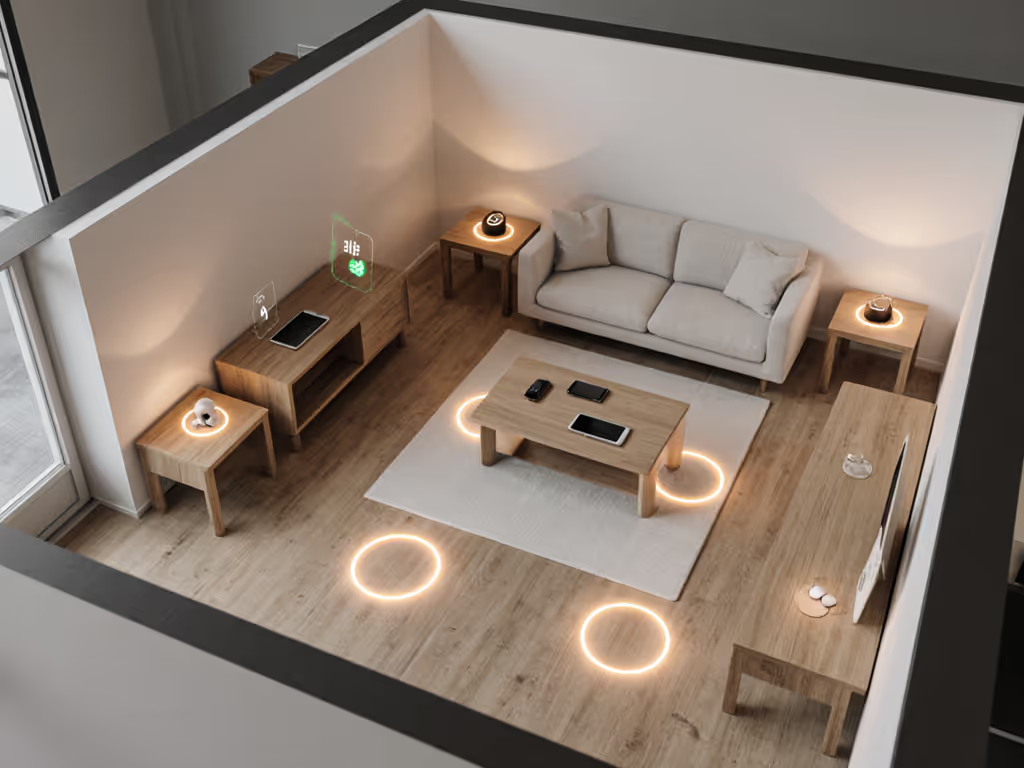
Step 4: Future-Proof Your Investment
With Qi2 standards emerging, how do you avoid buying tech that becomes obsolete?
Focus on systems with:
- Upgradable firmware (critical for evolving standards)
- Modular design (add transmitters as needed)
- Clear certification marks (don't risk uncertified gear)
Room-scale wireless power solutions should complement, not replace, your existing Qi pads. Think of far-field as solving the "in-between" moments when you're moving through space, while Qi handles dedicated charging spots.
For maximum longevity, prioritize systems that:
- Support both current and upcoming standards
- Have clear upgrade paths announced by manufacturers
- Integrate with smart home ecosystems you already use
Step 5: Optimize for Real-World Battery Health
Let's address the elephant in the room: heat anxiety. With constant "over the air charging," won't your battery degrade faster?
The reality is nuanced:
- Far-field systems typically deliver lower power continuously rather than high bursts
- Modern devices have sophisticated thermal management that throttles charging when needed
- Consistent top-ups can actually extend battery lifespan compared to deep discharges
Set up your system to:
- Deliver moderate power (5-7W) for background charging
- Integrate with device battery health features
- Create "cool zones" away from direct sunlight or heat sources
Track your device's battery health in settings for the first month. If you notice unusual behavior, adjust your transmitter placement rather than abandoning the system entirely.
Creating Your Tidy Charging Ecosystem
After implementing dozens of room-by-room charging flows, I've learned that the most successful systems share one trait: they remove decision fatigue. When guests and family members can just use your space without instructions, you've achieved something special.
Your next step isn't about buying the latest gadget. It's about observing how people actually move through your space and designing power flows that match those patterns. Start small, perhaps with your entryway where people naturally check their phones, then expand to other high-traffic zones.
I've seen the transformation when wireless charging range stops being a constraint: less anxiety, fewer dead devices, and spaces that feel genuinely supportive rather than technologically demanding.
As you explore room-scale wireless power, remember that true innovation isn't measured in watts but in moments of relief, when someone walks into your space, places their device anywhere nearby, and just knows it's charging.
Ready to explore further? Research current far-field wireless charging solutions with certified safety standards. Look for systems that publish independent testing data on efficiency and thermal performance. The future of wireless power transfer distance is unfolding now, and it is creating calmer spaces where technology serves us, rather than the other way around.
Related Articles

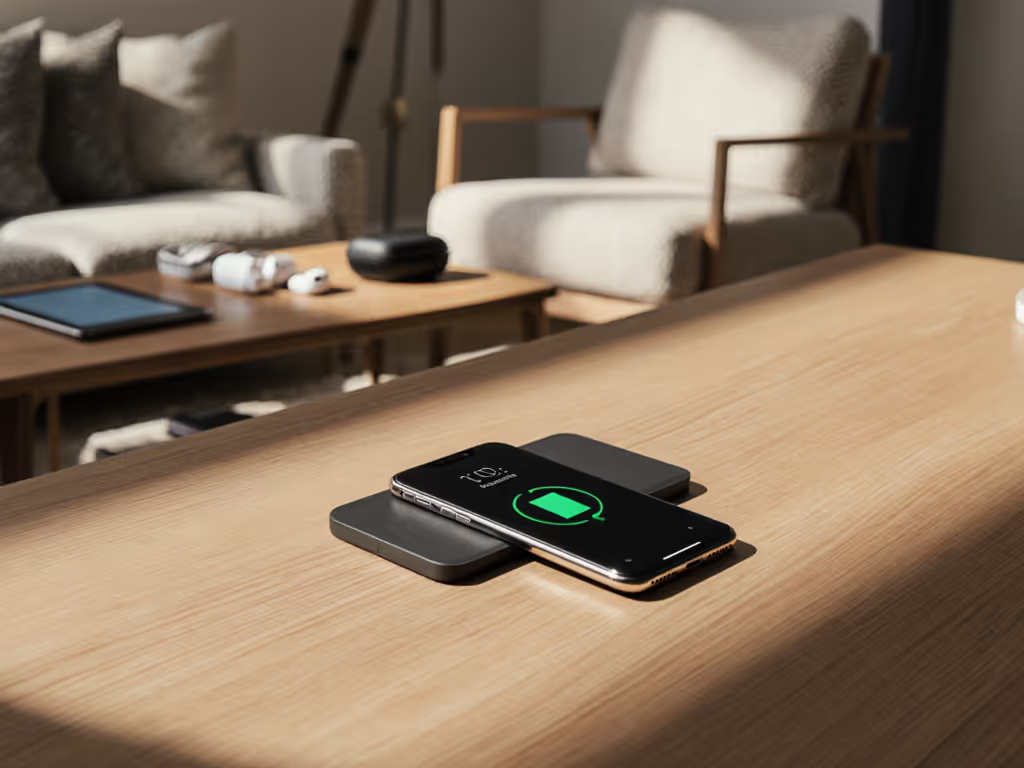
Resonant Wireless Charging: Drop-And-Go Power Without Alignment
Learn how resonant wireless charging delivers drop-and-go power without precise alignment - working through cases, charging multiple devices, and running cool and quiet. Get room-by-room tips to build guest-friendly, Qi2-ready zones that cut clutter and friction.
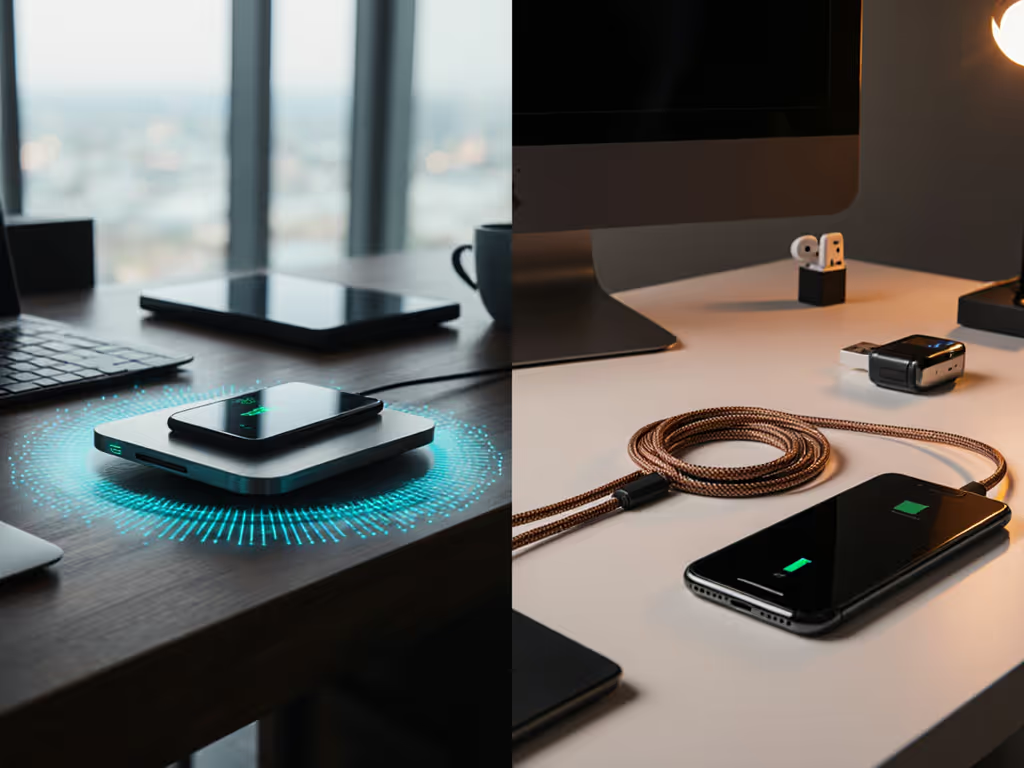
Wireless vs Wired Charging: Which Actually Wins Daily?
Clarity and placement beat raw wattage: build a mixed wireless/wired setup with predictable charging zones so everyday top-ups are effortless and deep charges stay cooler. Get practical layouts for bedroom, workspace, and car that reduce cable hunting, protect batteries, and stay guest‑friendly.
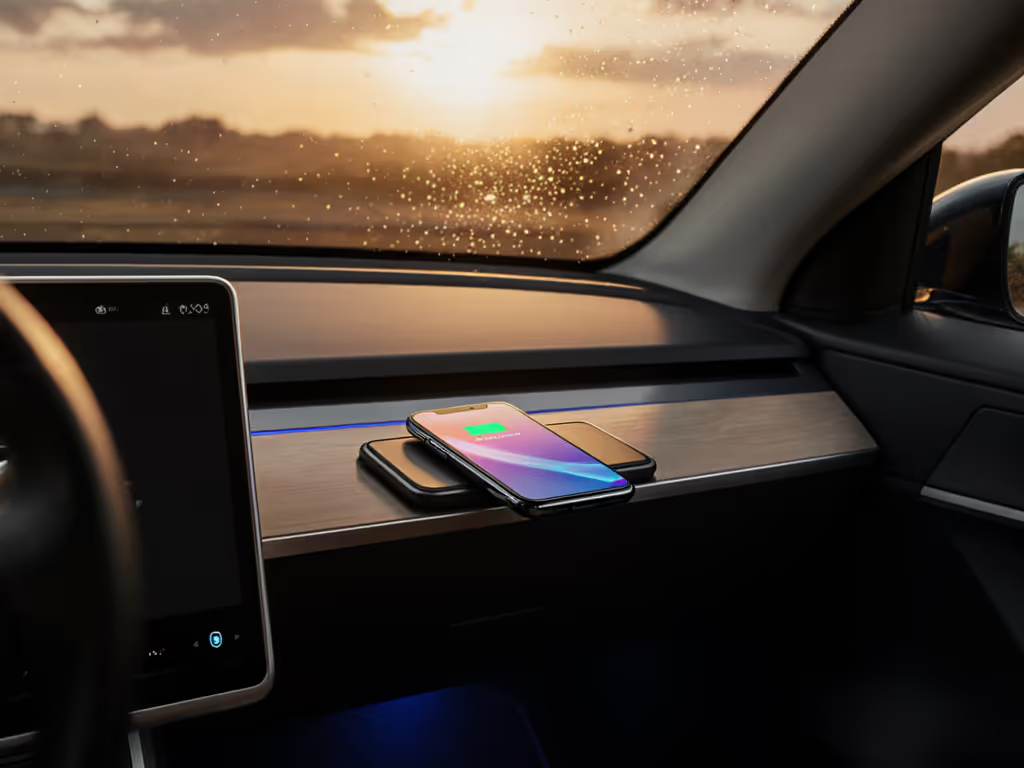
Tesla Wireless Charger Safety: Cool Dual Charging in Cars
Learn why phones heat up on in-car wireless chargers and the temperature thresholds that accelerate battery wear. Get practical placement, case, and ventilation tips, and see which charger features and Qi2 standards keep devices cooler and charging safely.
